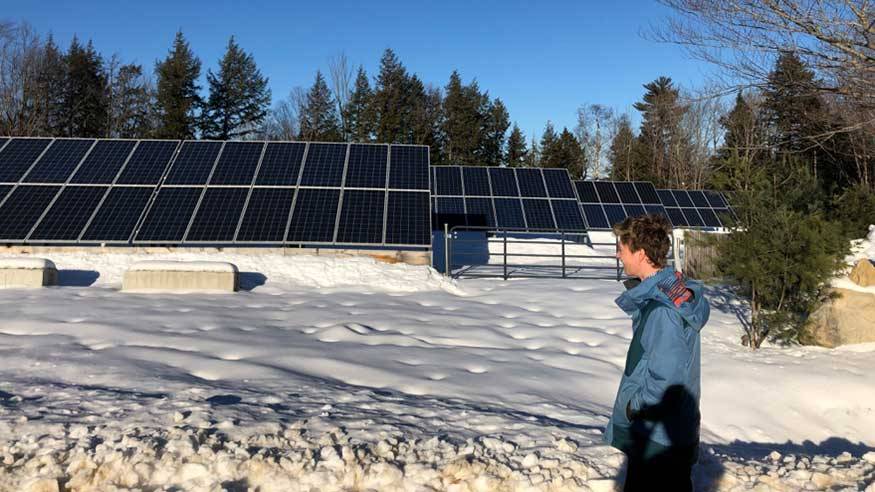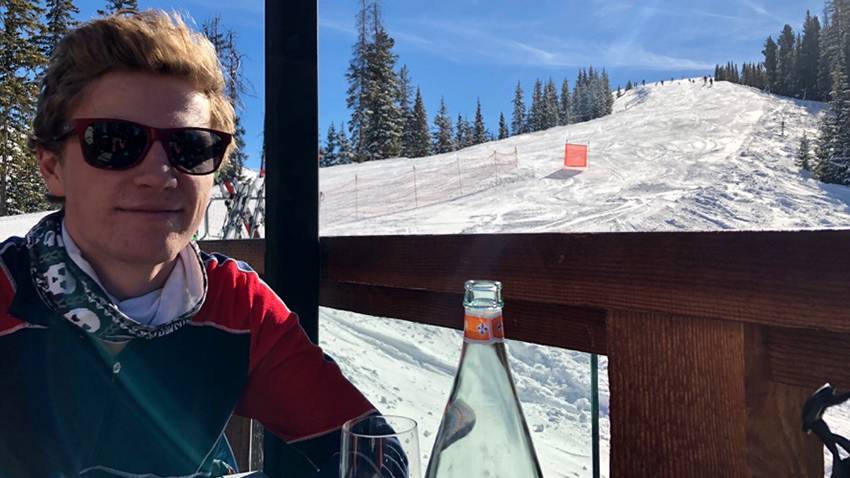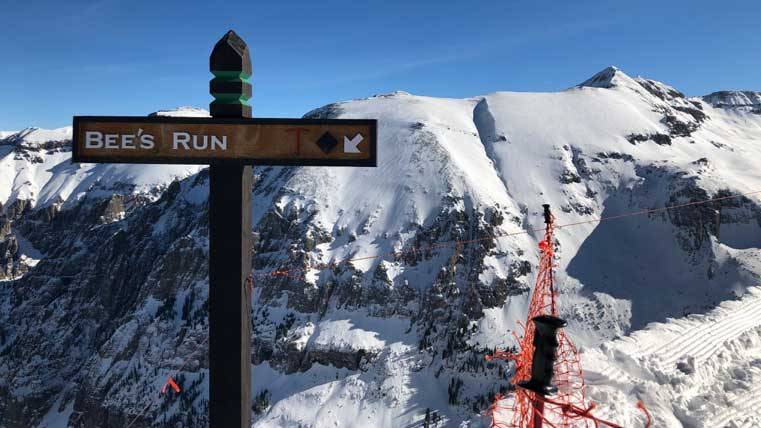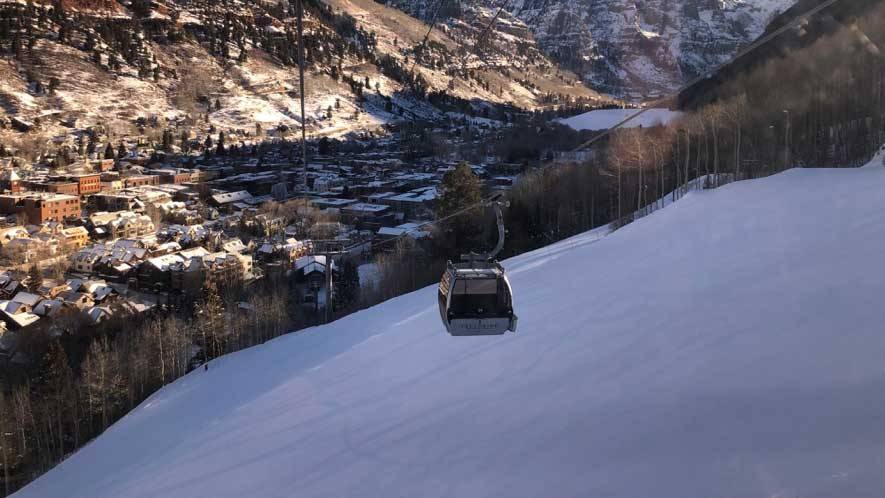Climate change is a global issue that affects every aspect of our planet. While statistics on mass extinction and the amount of time left to save the earth can be daunting to any individual, the ski industry may be one of the most affected- and concerned. Skiers and ski mountains need snow to ski on, but ski areas across North America (and the world) are increasingly experiencing rapid changes in temperatures and snowfall. Extensive research has demonstrated that ski resorts have alarmingly short lifespans if temperatures continue on an upward trend- but some ski resorts are more vulnerable than others. There is a significant difference between ski resorts based on region; this can perhaps most clearly be seen between the Northeast and Rocky Mountains.
Ski resorts have been implementing sustainable initiatives for years. However, there is little discussion on what their motivations for going green are; is it borne out of self-survival? Contributing to the greater good? Simply appealing to more customers, by having the appearance of a strong moral compass? I was curious to see not just what ski resorts were doing to address climate change, but their perceptions of it; its future impact, their individual vulnerability, the industry’s stance, and much more. I used my AMS grant to interview the managers, CEO’s, and directors of sustainability at U.S. ski resorts in both the Northeast and Rocky Mountains.
My trip took place over winter break of my senior year and began with two ski resorts in a cold and snowy part of Maine. Sunday River and Mt. Abram are barely 10 miles apart, but could not differ more in size. Sunday River is one of the most popular and well-known ski areas of the East, while Mt. Abram is a significantly smaller family-style resort. Both were subject to similar weather patterns- and both seemed aware of how risky seasons could be. Bob Harkins, General Manager of Mt. Abram, recalled the previous “Christmas Week” (the busiest time of the year for most ski resorts) as being nearly demolished by a record-breaking cold streak. He emphasized that climate change is not just warmer temperatures, but more instability and extremes in either direction.
This was just one grim reminder that ski resorts, at least in the East, are alarmingly vulnerable. But the difference in resources between mountains big and small does not seem to impact each mountain’s ability to fight climate change. Sunday River spent over $3 million in the last 5 years on more efficient snowmaking equipment. Impressively, Mt. Abram gets most of its energy from a solar panel field literally across the street. While these may seem like small examples, they demonstrate something important; both ski areas were quite focused on how they could be more sustainable, regardless of their size and resources.
I left western Maine for the snowy peaks of the Rockies, making my first stop in Aspen. Aspen Skiing Company (Ski Co.) is no doubt the industry leader in addressing climate change. The company has an entire sustainability division, and I met with the Sustainability Director, Matt Hamilton. One thing was immediately clear: Hamilton and Ski Co. mean business when it comes to sustainability. A quick skim of their webpage makes this apparent to anyone, but the fervor with which Hamilton described their mission was resounding. While I could talk forever about their initiatives, two things were clear: Ski Co. was, actually, doing it for themselves- just 100 years down the line. Hamilton stressed their sustainable initiatives were not out of dangers to their immediate business, but for their kids and grandkids to be on the same mountains in 100 years.
In a way, Hamilton was only using their lengthy business model as an example of Ski Co.’s motivations. They are taking a lead for the sake of their own company, and every other company on the planet, because it was the right thing to do. Which leads me to my next point: Ski Co. does not think the rest of the industry is pulling their weight. While Hamilton acknowledged many sustainable initiatives at other resorts, he pointed out a multitude of smaller objectives that don’t take massive resources or manpower, just a motivation to incite change. The ski industry is not forced into talking about climate change just because they need snow. They are also lucky to work in an environment where people share a love and passion for the outdoors and a shared desire to save it.
My next stop out west was in Telluride, CO. It is well known the Rockies have some semblance of a “weather safety net” for several decades to come. While Aspen is quite motivated regardless of this fact, Telluride felt much more aware of their decent timeline. Bill Jensen, President and CEO of Telluride, frequently brought up a recent study estimating East Coast ski resorts had only 15 more years to live; areas in the Rockies had 75 to 100 years until extinction. This was not a justification for Telluride to be unconcerned. As a matter of fact, Jensen and Telluride were quite concerned; he just felt he was being more realistic. As he put it, the ski industry “can’t be the canary in the coal mine”. Jensen believes ski resorts should be concerned with climate change and should do what they can. But ski area waste and carbon footprints are a fraction of what so many other industries in the United States are producing. So ski resorts should continue to limit their own waste, and try to inspire their customers to do the same. But, if Telluride is still going to be graced with good weather for the next 75 years, then so be it.
And finally, I traveled back to my home ski area for the last 8 years, Windham Mountain. Located in Upstate New York, Windham knows all too well the fluctuations in conditions and its potentially devastating impacts. Windham is a mid-sized resort with many of their own initiatives, from eliminating straws and strengthening recycling to buying more efficient snow guns. CEO and General Manager Chip Seamans articulated the reality of it; climate change has forced the industry to think differently about their actions. The issue is, companies like the ones Jensen referred to aren’t being forced to look inward. Some may be motivated to do the exact opposite. By this point, I had interviewed many subjects for whom retirement was not far over the snowy horizon. For Chip it was the same; did this impact his motivation to spearhead sustainable initiatives? If he were leaving the industry soon, why would fighting climate change now matter? The answer for him, and I can bet for my other subjects, is that it doesn’t matter about him- and it does not matter about the business. From Chip’s perspective, ski areas are not becoming more sustainable out of keeping their business alive to turn a better profit. They are doing it because they love the sport of skiing and they love the earth. In this way, the prospect of retirement had the opposite effect; with limited time to still incite change at their ski areas, ski area executives were getting to work while they could.
The ski industry was given a dilemma to be tackled in many different forms. Through my travels, I was inspired by the multitude of people making the world a better place. I was scared, motivated, and angered seeing first-hand another way climate change is harming our world. And I was shown how many ways we can combat climate change- but that deep down, it starts with every individual. Addressing climate change requires internal reflection, realizing what is important and what each person can do given their position. And when multiple people come together with a shared goal, that is when ski areas, and the world, can truly address climate change.






